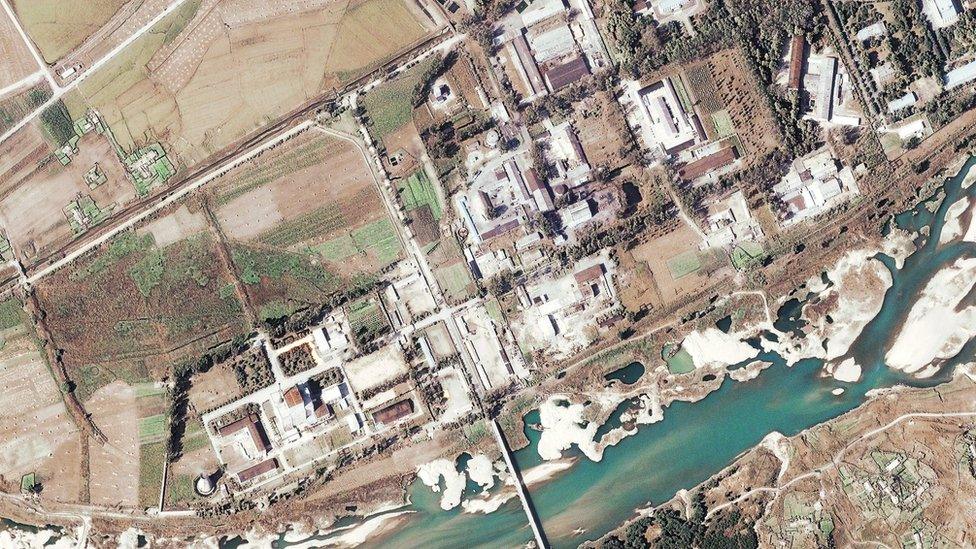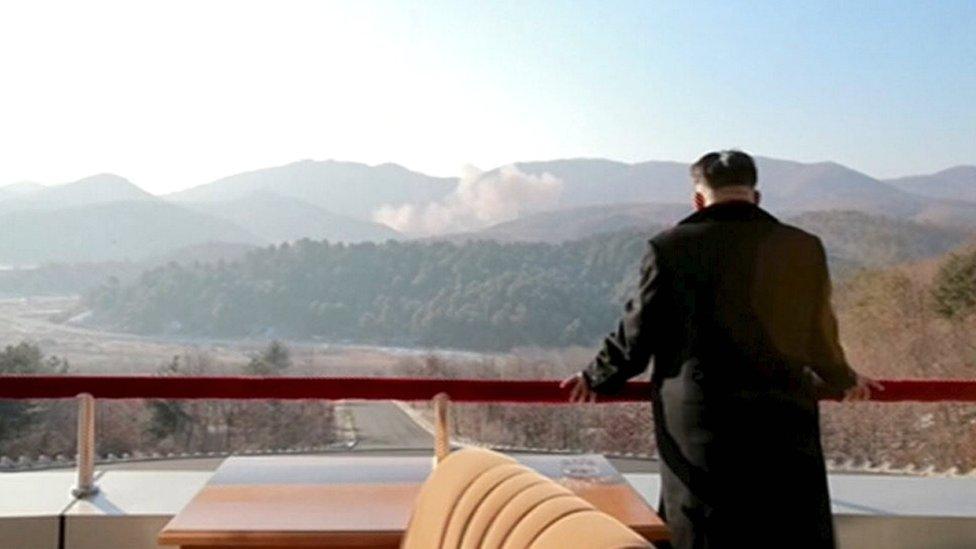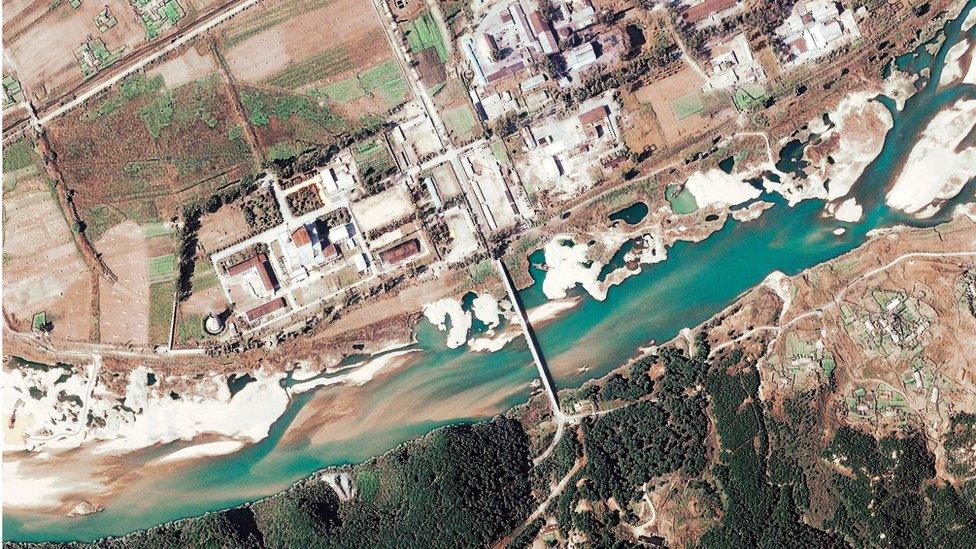North Korea 'expands plutonium production', says US
- Published
Has North Korea got the bomb?
North Korea could soon have enough plutonium for nuclear weapons after restarting one of its reactors, US intelligence chief James Clapper says.
He also said Pyongyang had taken steps towards making an intercontinental ballistic missile system., external
It comes days after the North launched a long-range rocket, which critics say is a test of banned missile technology.
Last September Pyongyang said its main nuclear facility at Yongbyon had resumed normal operations.
The reactor there has been the source of plutonium for its nuclear weapons programme. The North carried out its fourth nuclear test in January.
How advanced is North Korea's nuclear programme?
"We assess that North Korea has followed through on its announcement by expanding its Yongbyon enrichment facility and restarting the plutonium production reactor," Mr Clapper wrote in his annual assessment of threats facing the US.
"We further assess that North Korea has been operating the reactor long enough so that it could begin to recover plutonium from the reactor's spent fuel within a matter of weeks to months."

The Yongbyon nuclear facility is North Korea's main nuclear site

North Korean TV broadcast the recent launch of the rocket
Mr Clapper also told the Senate Armed Services Committee that Pyongyang was committed to developing a long-range, nuclear-armed missile "capable of posing a direct threat to the United States".
He said it had publicly displayed a mobile intercontinental ballistic missile system and had taken "initial steps toward fielding this system, although the system has not been flight-tested".

Sunday's rocket launch was watched by North Korean leader Kim Jong-un
Experts have said that, when fully operational, the Yongbyon reactor could make one nuclear bomb's worth of plutonium per year. About 4kg of plutonium is needed, external in order to make a bomb that would explode with a force of 20 kilotons.
Pyongyang has pledged several times to stop operations at Yongbyon and even destroyed the cooling tower in 2008 as part of a disarmament-for-aid deal.
However, in March 2013, following a row with the US and after new UN sanctions over a third nuclear test, it vowed to restart all facilities at Yongbyon.
Six-nation talks involving South Korea, the US, China, Japan and Russia aimed at ending the North's nuclear programme have been stalled since 2009.
Pyongyang says it has made a device small enough to fit a nuclear warhead on to a missile, which it could launch at its enemies. However, US officials have cast doubt on the claim.

Yongbyon nuclear complex
North Korea's main nuclear facility, believed to have manufactured material for previous nuclear tests
Reactor shut down in July 2007 as part of a disarmament-for-aid deal
International inspectors banned in April 2009 when North Korea pulled out of disarmament talks
A uranium enrichment facility was revealed in 2010. An American nuclear scientist said centrifuges appeared to be primarily for civilian nuclear power, but could be converted to produce highly enriched uranium bomb fuel
In 2013, North Korea said it would restart the nuclear reactor, the same year it conducted a nuclear test. It is believed to have shut it down for a period in 2014.
Experts believe that reactor could make one bomb's worth of plutonium per year
Nuclear test based on uranium device would be harder to monitor than plutonium

- Published3 September 2017

- Published10 August 2017
